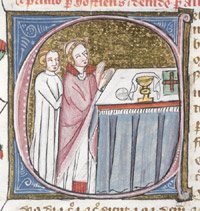 |
 |
 |
 |
 |
 |
 |
|
What happened to Rievaulx’s monks after the Dissolution ? (4/5)
Every monk of Rievaulx who was present at the
dissolution of the abbey in 1538 was awarded a pension. The annual
amount received varied depending on the monk’s standing within
the community, whether, for example, he had been ordained as a
priest or had held an administrative office. All of the Rievaulx monks seem to have agreed to this and many seem to have taken up office in the vicinity. Thomas Jackson, who was probably the former prior of Rievaulx, served in a chantry at Pocksley, in Helmsley Parish.(7) William Bradley served as a chantry priest and was an incumbent of the guild of St Katherine, a parish church of Rotherham;(8) Henry Cawton became the curate of Hovington and may later have served as vicar of Strensall;(9) William Stapleton became vicar of Eastrington;(10) Roger Watsom, appears to have held the cure of Whenby and William Steynson may have served in St Saviour’s chantry, York Minster.(11) Matthew Tort, it seems, served as a chantry priest at Southwell Minster and later purchased chantry property in Southwell where he was living in 1557; in 1559 he was presented to the living of Kettlethorpe in Lincoln, in 1560 to the rectory of Hockerton, and in 1563 to the prebend of Woodbourgh, Southwell Minster. When Matthew made his will in 1576 he described himself as parson of Hockerton.(12) |
